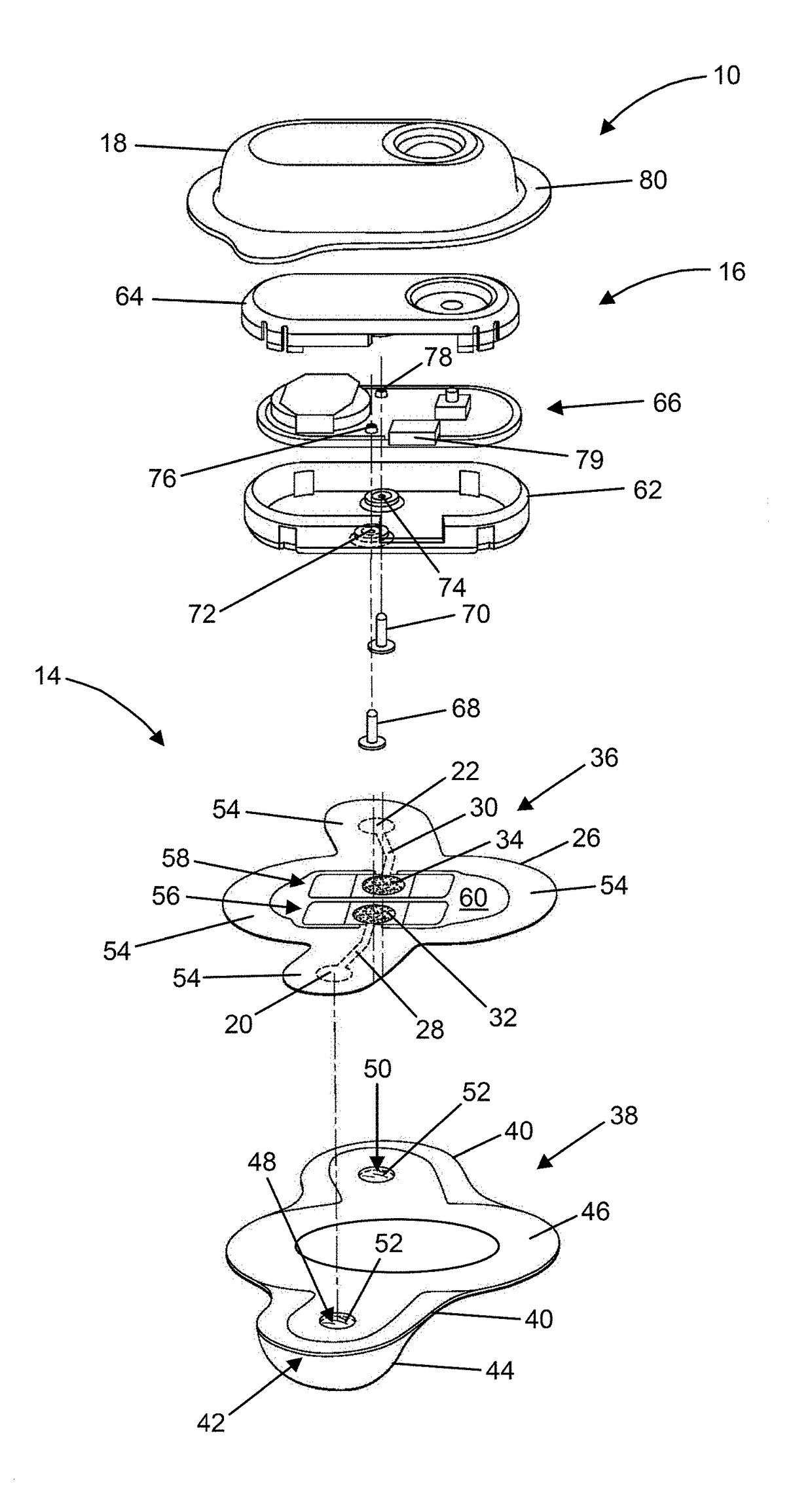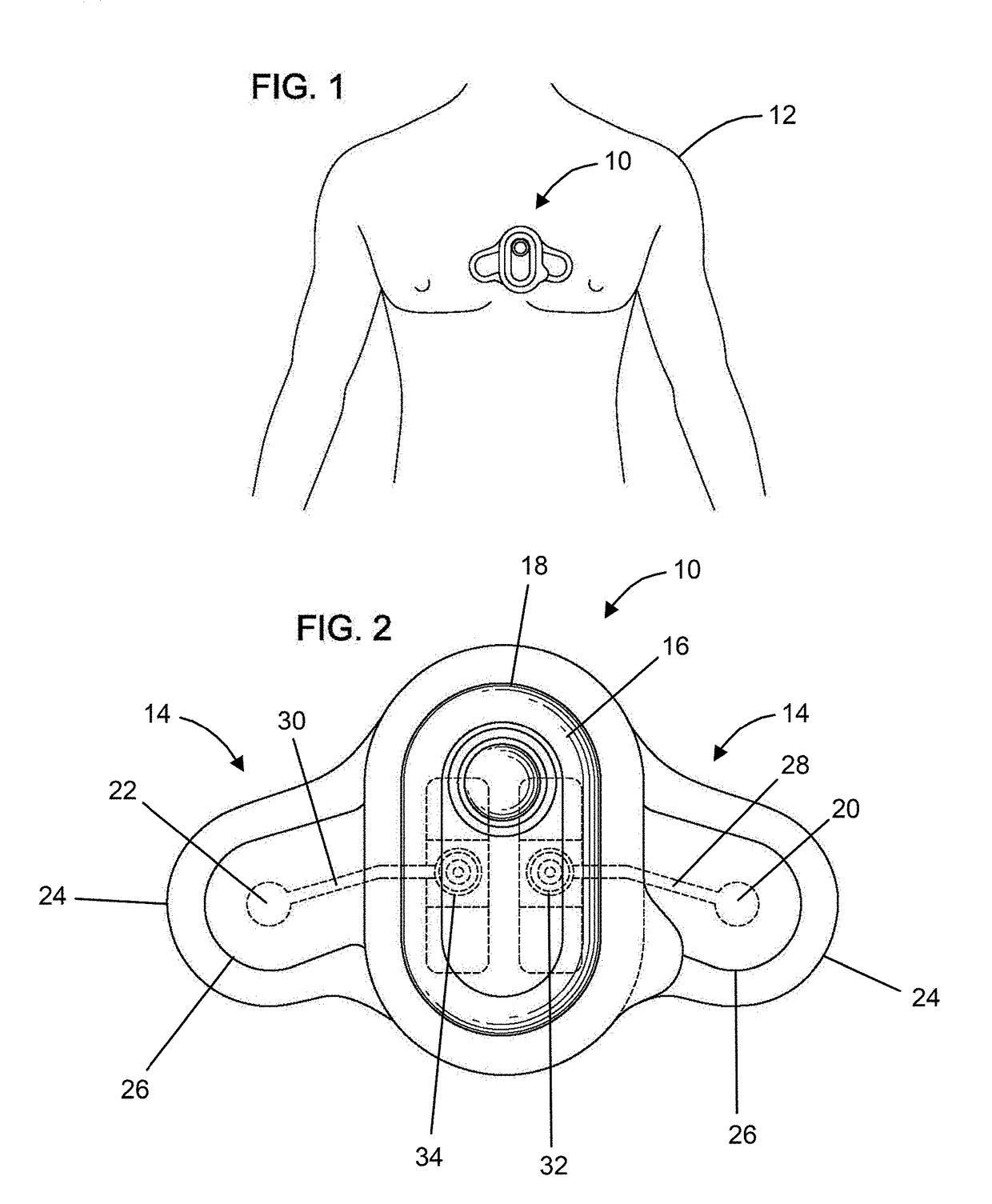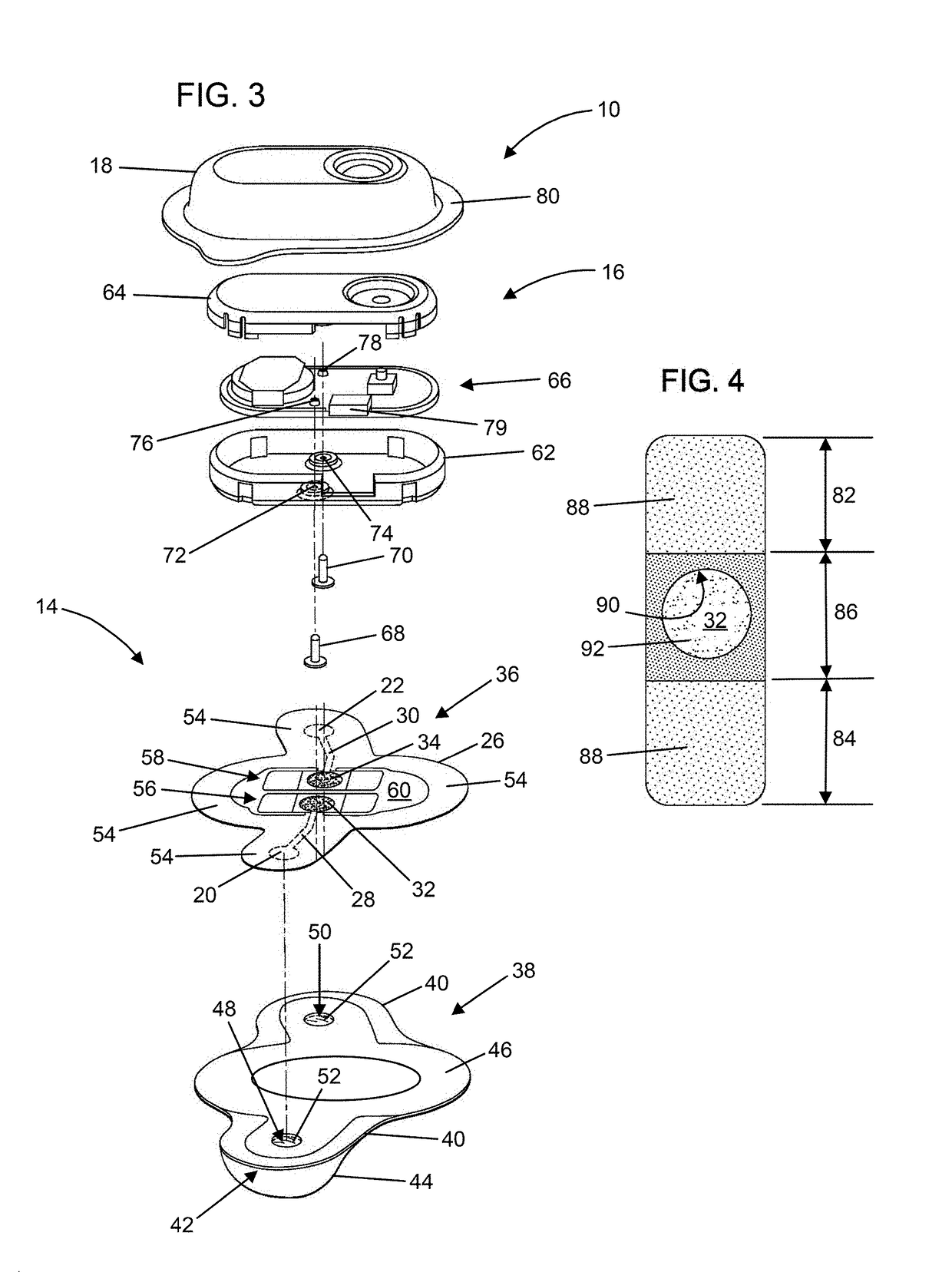Ambulatory monitor with conductive adhesive and related methods
a technology of conductive adhesive and monitor, which is applied in the field of ambulatory monitor with conductive adhesive, can solve the problems of inability to collect physiological data over extended timespans, inability to detect intermittently observed heart conditions, and inability to detect latent heart conditions
- Summary
- Abstract
- Description
- Claims
- Application Information
AI Technical Summary
Benefits of technology
Problems solved by technology
Method used
Image
Examples
Embodiment Construction
[0047]In the following description, various embodiments of the present invention will be described. For purposes of explanation, specific configurations and details are set forth in order to provide a thorough understanding of the embodiments. However, it will also be apparent to one skilled in the art that the present invention may be practiced without the specific details. Furthermore, well-known features may be omitted or simplified in order not to obscure the embodiment being described.
[0048]Referring now to the drawings, in which like reference numerals represent like parts throughout the several views, FIG. 1 shows an ambulatory monitor 10 adhered to the chest of a user 12. In embodiments described herein, the ambulatory monitory 10 is configured to record ECG data for the user 12 that is generated via two electrodes coupled with the user's skin. The ambulatory monitor 10 can, however, be adapted to record any suitable physiological data of the user 12. For example, the ambula...
PUM
 Login to View More
Login to View More Abstract
Description
Claims
Application Information
 Login to View More
Login to View More - R&D
- Intellectual Property
- Life Sciences
- Materials
- Tech Scout
- Unparalleled Data Quality
- Higher Quality Content
- 60% Fewer Hallucinations
Browse by: Latest US Patents, China's latest patents, Technical Efficacy Thesaurus, Application Domain, Technology Topic, Popular Technical Reports.
© 2025 PatSnap. All rights reserved.Legal|Privacy policy|Modern Slavery Act Transparency Statement|Sitemap|About US| Contact US: help@patsnap.com



